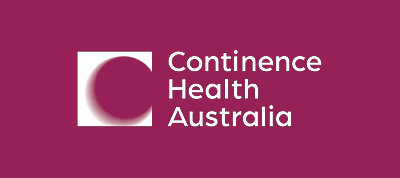Editorial September 2025
Christian Moro A *
A *
A
In this edition of the Australian and New Zealand Continence Journal we present the abstracts from the 33rd National Conference on Incontinence (NCOI). This was a fantastic week, held in Hobart, Tasmania. It was a delight to see so many research presentations related to continence and it is clear that Australian and New Zealand researchers are leading the way across many different areas. I encourage all abstract authors who are published within this edition to consider submitting their research to the Australian and New Zealand Continence Journal (ANZCJ) upon completion. Our model remains entirely Diamond Open Access, with no cost to authors or readers, and our articles are listed across an increasing variety of online databases.
One of our highlights during the NCOI was celebrating 30 years of the ANZCJ (1995–2025). It was an honour to chair a panel of past editors, and thank Professor Kate Moore, Dr Marg Sherburn and Dr Jenny Kruger for presenting their memories, anecdotes and stories from their times as Editor in Chief. We also thank past editors Malcom Fraser, Peter Dietz and Mark Weatherall. Resting on such strong foundations with a consistently all-star editorial board and past editors, the journal has certainly gone from strength to strength.
Some of the memories relayed during the presentation were how Professor Moore converted the Continence Health Australia (then the Continence Foundation of Australia) research newsletter into a formal academic publication. Professor Moore also relayed some examples of success, including how an important study on clean intermittent self-catheterisation1 was eventually published in the ANZCJ, when the participant numbers were considered too small to be accepted in larger international journals. Dr Sherburn outlined the introduction of DOIs in 2016 and Dr Kruger detailed the migration process of the journal from print to online in 2021. A discussion followed into how many academics and clinicians in the field of continence cite the ANZCJ as the place where they had their ‘first start’ in research. Dr Sherburn gave the example of how Associate Professor Wendy Bower, who now leads Continence Health Australia’s research strategy, published her first paper in the ANZCJ.2 On a personal note, I have been very grateful for the ANZCJ as an outlet for my research over many years while developing a career in continence research.3–5
Besides the published research, the journal has also contributed to the continence community in a variety of ways over the last 30 years. This includes hosting various workshops on publishing, ethics and research at NCOI conferences, which aimed to educate up-and-coming researchers. The ANZCJ has also published abstracts from many past NCOI and Urogynaecological Society of Australasia (UGSA) meetings and encouraged outputs by recipients of the Bladder Foundation Research Grants. Jacinta Miller, our former Managing Editor, has helped countless Masters and PhD students work towards their first publications.
The journal thanks Continence Health Australia for the support and funding over the last 30 years, as well as our advertisers, researchers and wide community of reviewers. You can watch the video of our 30th anniversary presentation through this link: https://www.youtube.com/watch?v=DUO9SQzQasE. Next year’s NCOI will be held between the 13–16 May 2026 at the Pullman Melbourne Albert Park, Melbourne, Victoria. Our ANZCJ team looks forward to meeting you there.
Introducing Dr Katie Martin – Journal Manager (CSIRO)
I would like to extend a warm welcome to Dr Katie Martin, who is joining our ANZCJ team as the new Journal Manager. Working within CSIRO Publishing, Katie will be providing support to our Managing Editor Sarah Tayler and myself, while also ensuring a seamless submission and overall experience for our authors. Katie holds a PhD in Neurobiology and a Masters in Chemistry.
Conflicts of interest
CM is the Editor-in-Chief and Chair of the Australian and New Zealand Continence Journal.
References
1 Leek H, Mansfield KJ, Reus A, Moore KH. Clean intermittent self-catheterisation: a randomised controlled crossover trial of single-use versus multiple reuse of catheters. Aust N Z Cont J 2019; 25(3): 64-73 Available at https://search.informit.org/doi/pdf/10.3316/informit.609024370390853.
| Google Scholar |
2 Rose GE, Bower WF, Ervin CF, Whishaw DM, Khan F. Reliability testing of the TANGO Short-Form nocturia screening. Aust N Z Cont J 2017; 23(3): 68-74 Available at https://search.informit.org/doi/10.3316/informit.085145436685436.
| Google Scholar |
3 Phelps C, Moro C. Ageing and the bladder mucosa: a scoping review of recent animal model studies. Aust N Z Cont J 2022; 28(4): 77-83.
| Crossref | Google Scholar |
4 Phelps C, Tynan S, Moro C. Recent insights into pharmaceutical treatments for underactive bladder: a scoping review of recent studies. Aust N Z Cont J 2024; 30(1): 4-10.
| Crossref | Google Scholar |
5 Stromberga Z, Moro C. Which of the primary prostaglandin receptors might play a role in lower urinary tract dysfunction? A narrative review. Aust N Z Cont J 2020; 26(3): 58-60.
| Crossref | Google Scholar |


